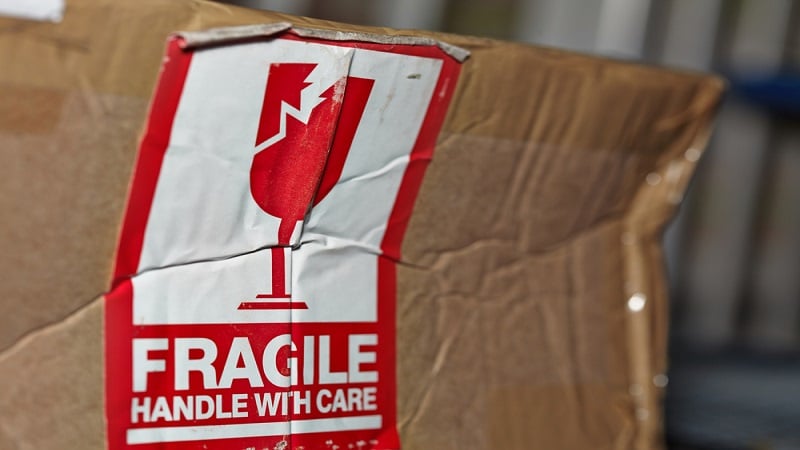
Damage to freight is a significant concern for many businesses, as many organizations can hardly afford the costs associated with recovering from damage to goods or products during shipping.
To reduce the frequency and intensity of damage due to impacts, many business leaders choose to apply impact sensors to their shipments — but are these tools right for you and your business? Here are a few pros and cons of using impact sensors for you to consider.
Pros of Adding Impact Sensors to Shipments
Information

Information about business operations can be as valuable to business leaders as cold hard cash. Especially at the beginning of an organization’s experience with shipping, impact sensors can provide useful intel into how the shipping journey affects the company’s shipped goods, which in turn can help leaders make better decisions about their supply chain, product packaging, carrier relationships and more.
For example, impact sensors might show normal amounts of shock applied to packages, but if the goods inside are irreparably harmed, business leaders likely need to rethink how they package and protect their goods during transit. In contrast, if impact sensors consistently reveal that packages are experiencing extreme shocks, leaders may want to find a carrier with more care and respect for their freight.
Reputation
Clients and consumers like to work with companies that care about the quality and condition of their goods. Applying impact sensors is an extra step in the shipping process that demonstrates a business’s interest in preserving the safety and integrity of their goods throughout transit.
This signals to carriers that businesses are paying attention to the treatment of their packages, and it tells clients and customers that businesses are looking out for their best interests. As a result, companies that use impact sensors can develop positive reputations as excellent shippers.
Efficiency
In some cases, damage that occurs to goods during shipping is the sole financial responsibility of the shipper, or the company sending the goods. In other cases, businesses can file claims with carriers to recoup some or all of the value lost due to shipping damage.
The information provided from impact sensors can help organizations find success in their damage claims, which can mitigate some of the risk associated with transportation of goods.
Cons of Adding Impact Sensors to Shipments
Cost

Every element of shipping costs money, from the packaging to the transportation. Impact sensors, too, come with costs, and many companies operating on slim margins cannot afford even the relatively small expense of basic impact sensors.
However, for some organizations, the costs of avoiding information about shipping and handling are much higher than the price of sensors. Businesses with tight budgets might find a way to gain intel by applying sensors to some shipped packages for a limited amount of time or intermittently to test their carrier and packaging.
Time
Effective business leaders understand that the more time it takes to ship a product, the less profit a company can make.
Unfortunately, applying impact sensors to product packaging is an additional step in the shipping process, and that step will demand time from staff who must order sensors, organize them and adhere them to shipped goods before they can begin the transportation journey. Because time is money, for some organizations, the value of impact sensors is not worth the time spent.
Accuracy
Not all impact sensors are created equal. Some of the most inexpensive and accessible options will only tell an organization that a package sustained an impact of a certain intensity — not when, why or who is to blame. There are more high-tech sensors that have built-in clocks and even more advanced sensors that can send information about shocks to companies in real time, but most companies rely on basic impact sensors and make educated guesses about how damage occurred.
Whether or not impact sensors will be a valuable addition to your shipping process depends on many factors. If you suspect that knowing more about the impacts and shocks your packages receive will improve your business, you can acquire impact sensors today for relatively little investment. Then, you can begin optimizing your shipments for your business and your customers.










